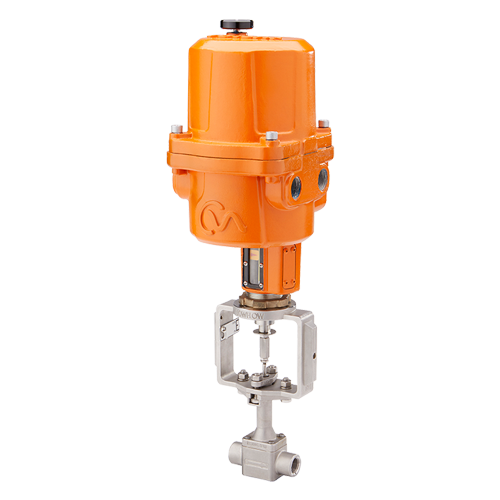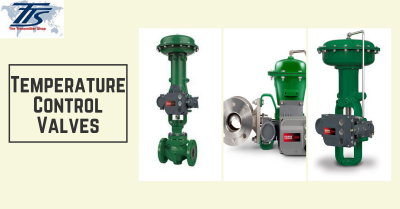Enhancing Operational Effectiveness with Advanced Control Valves
Enhancing Operational Effectiveness with Advanced Control Valves
Blog Article

Maximize Energy Financial Savings and Comfort With Advanced Building Automation Controls
In the world of contemporary style and center administration, the combination of advanced structure automation controls stands as an essential innovation. The merging of technology and sustainability has actually birthed a new period where energy effectiveness, comfort optimization, and operational streamlining are no more possible truths but distant ambitions. By using the power of automation, structures can adjust, respond, and advance in manner ins which were when unbelievable. The capacity for substantial power financial savings and enhanced comfort is not just an opportunity yet an assurance waiting to be satisfied. This standard change in structure management holds the key to unlocking a world where ecological conscientiousness and occupant health sympathetically coexist within the walls of our frameworks.
Power Effectiveness Benefits
Power effectiveness advantages can substantially decrease power intake and operational expenses in structures. By executing energy-efficient practices and innovations, structure proprietors and drivers can achieve considerable cost savings while also adding to environmental sustainability. One of the primary benefits of enhancing power efficiency in buildings is the reduction of utility bills. Energy-efficient systems, such as advanced structure automation controls, can optimize making use of sources like home heating, illumination, and cooling, resulting in lower energy expenditures gradually.
Moreover, boosted power efficiency can lengthen the lifespan of structure equipment and systems. By running extra effectively, a/c systems, light, and other building parts experience less deterioration, leading to decreased upkeep and substitute costs. Furthermore, energy-efficient buildings commonly command greater property values and rental prices, giving long-term economic advantages to owners.
Additionally, energy effectiveness can improve owner convenience and performance. Properly managed indoor settings with ideal lights and thermal problems develop a more conducive and pleasurable workspace, bring about improved worker complete satisfaction and efficiency. On the whole, the power efficiency advantages connected with innovative building automation controls are multifaceted, incorporating expense savings, environmental stewardship, and owner health.
Improved Comfort Control
Enhancing comfort control in structure environments calls for a sophisticated integration of advanced automation systems for ideal occupant health. By using advanced building automation controls, centers can tailor the indoor setting to satisfy the certain requirements and preferences of passengers. These systems make it possible for specific guideline of air flow, temperature, and lighting, developing a productive and comfortable atmosphere. Resident contentment and performance are carefully connected to thermal convenience, making it necessary to have systems in area that can adjust to altering conditions in real-time.
By including these sophisticated controls, structures can not just enhance comfort but also improve power efficiency by maximizing system procedures based on real tenancy and use patterns. Eventually, focusing on owner convenience through advanced automation systems leads to a more delightful and much healthier indoor environment.
Operational Effectiveness Improvements

Additionally, the execution of real-time tracking and analytics have a peek at this site tools enables building operators to recognize power inadequacies and functional abnormalities immediately. By constantly keeping track of energy usage patterns and system performance metrics, adjustments can be made in real-time to maximize power intake and make certain peak operational effectiveness. control valves. In addition, including demand response strategies into structure automation controls can additionally improve functional performance by dynamically changing power use based on grid conditions and rates signals
Indoor Climate Optimization
Effective indoor climate optimization is a basic facet of structure automation controls, guaranteeing passengers' comfort and health while maximizing energy savings. By making use of advanced sensing units and controls, developing automation systems can constantly check and change temperature, moisture levels, air high quality, and ventilation to create an optimal interior environment. Preserving consistent and comfortable conditions not only boosts resident fulfillment but also enhances productivity and overall health.
Indoor climate optimization likewise plays an essential function in energy efficiency. By fine-tuning cooling, ventilation, and home heating systems based on real-time data and tenancy patterns, building automation controls can dramatically minimize power intake - control valves. As an example, implementing techniques such as demand-controlled air flow and thermal zoning can aid minimize energy waste while ensuring that each area of the structure gets the needed conditioning.

Lasting Atmosphere Production
Building automation manages not only optimize interior climate conditions for power performance and owner comfort however also lay the foundation for creating a lasting atmosphere via calculated administration of resources and systems. By integrating innovative structure automation modern technologies, such as sensing units, actuators, and smart software application, centers can readjust and keep track of power usage in real-time to reduce waste and minimize their carbon impact. These systems allow anticipating maintenance, identifying potential issues before they intensify and enhancing devices performance to improve durability and effectiveness.
Additionally, sustainable setting development expands beyond energy administration to incorporate water preservation, waste reduction, and indoor air visit this site high quality renovation. Structure automation controls can control water usage, detect leaks, and guarantee proper waste disposal techniques, contributing to total sustainability initiatives. In addition, by keeping an eye on and regulating ventilation and purification systems, these technologies enhance owner health and efficiency while reducing energy consumption related to heating and cooling operations.
Conclusion
Finally, progressed building automation manages deal substantial advantages in terms of energy financial savings, convenience control, functional efficiency, indoor environment optimization, and developing a sustainable setting. By implementing these controls, structures can achieve optimal efficiency while reducing power intake and enhancing resident convenience. It appears that using innovative automation technology is essential in boosting building performance and developing a much more sustainable future.
Power effectiveness benefits can dramatically minimize energy usage and functional costs in structures. On the whole, the power effectiveness advantages connected with innovative building automation controls are multifaceted, encompassing price savings, ecological stewardship, and owner wellness.
Furthermore, incorporating demand response strategies right into structure automation controls can better boost functional performance by dynamically adjusting power use based on grid conditions and rates signals.
Building automation manages not only optimize indoor climate problems for power effectiveness and passenger comfort but likewise lay the structure for producing a sustainable atmosphere via calculated monitoring of resources and systems.In final thought, advanced building automation manages deal considerable advantages in terms of energy savings, comfort control, operational performance, interior climate optimization, and developing a lasting setting.
Report this page